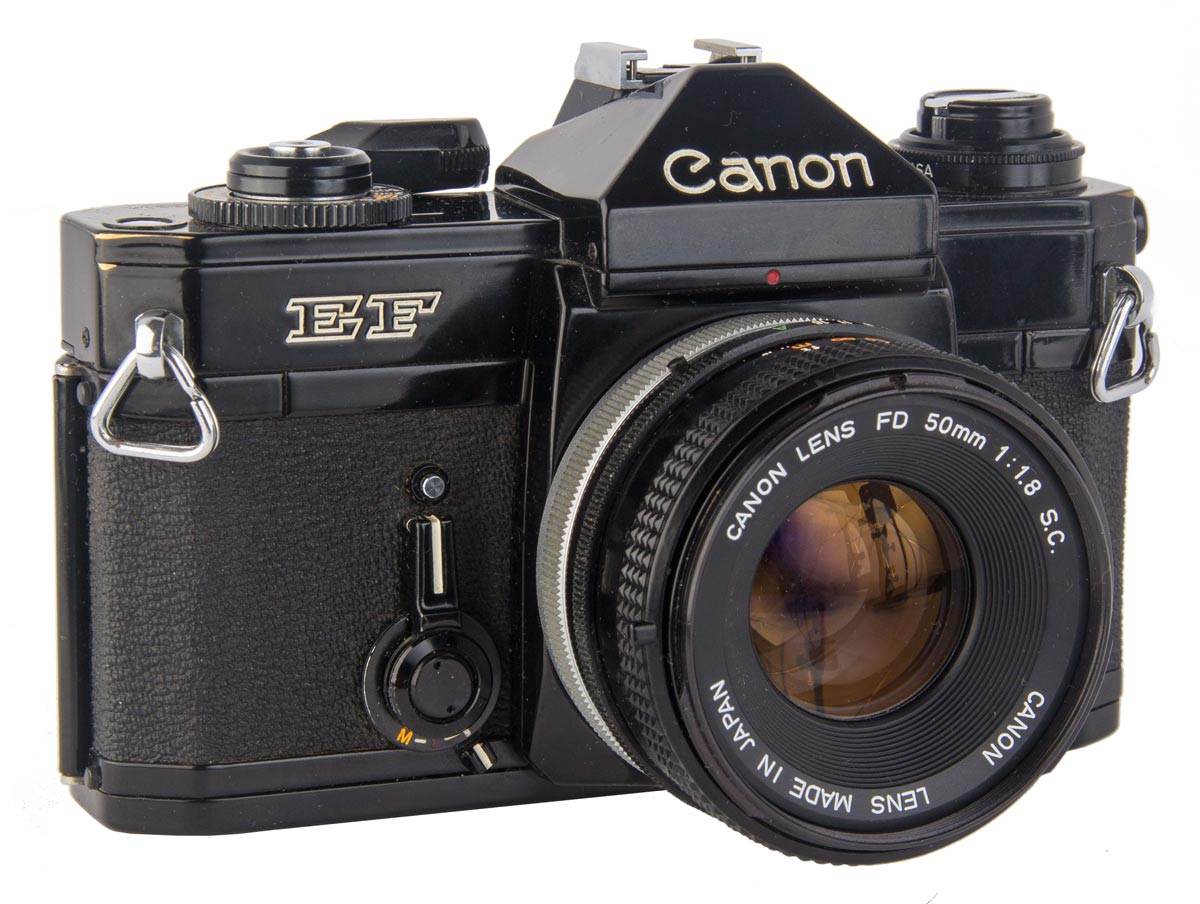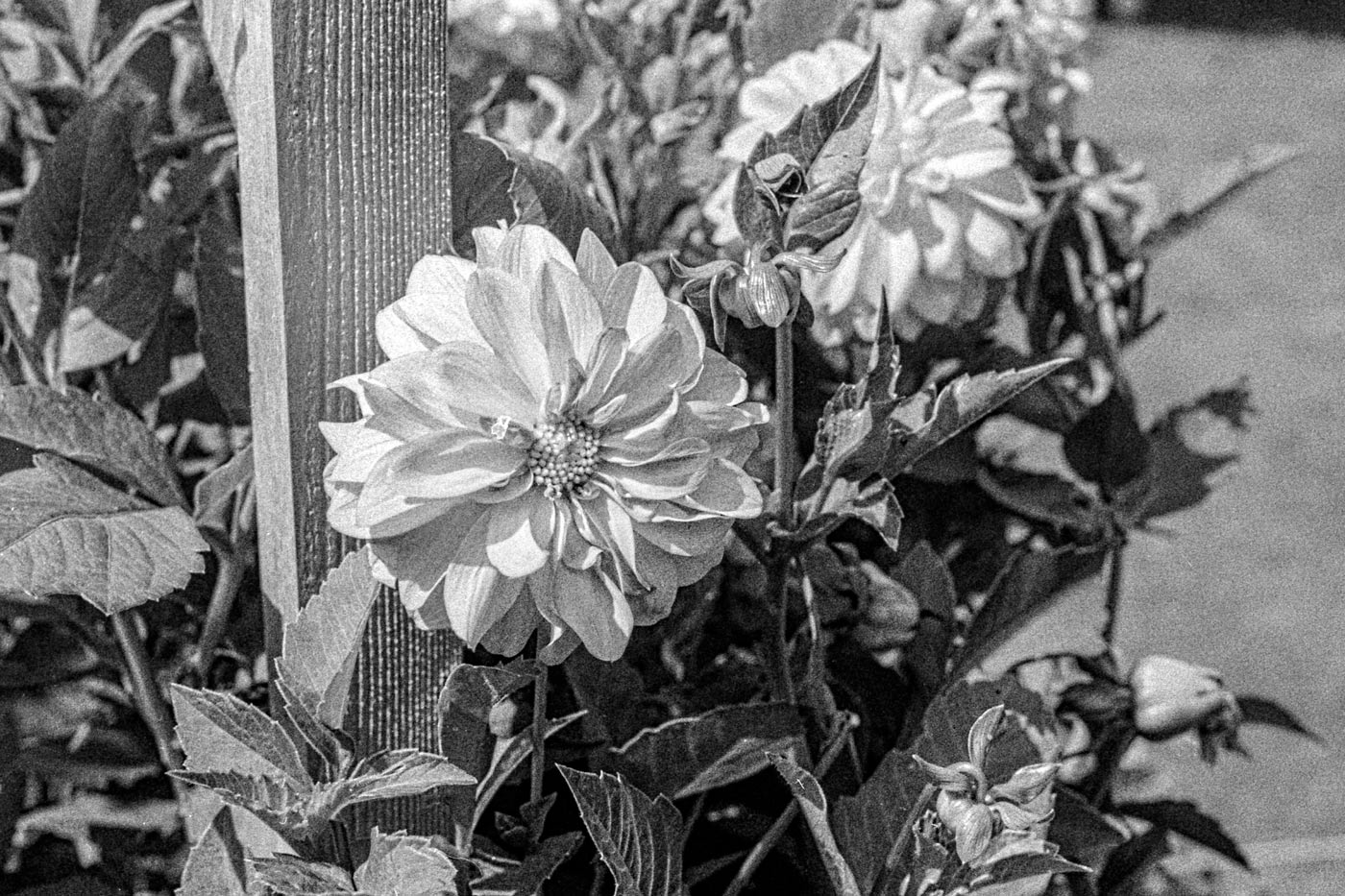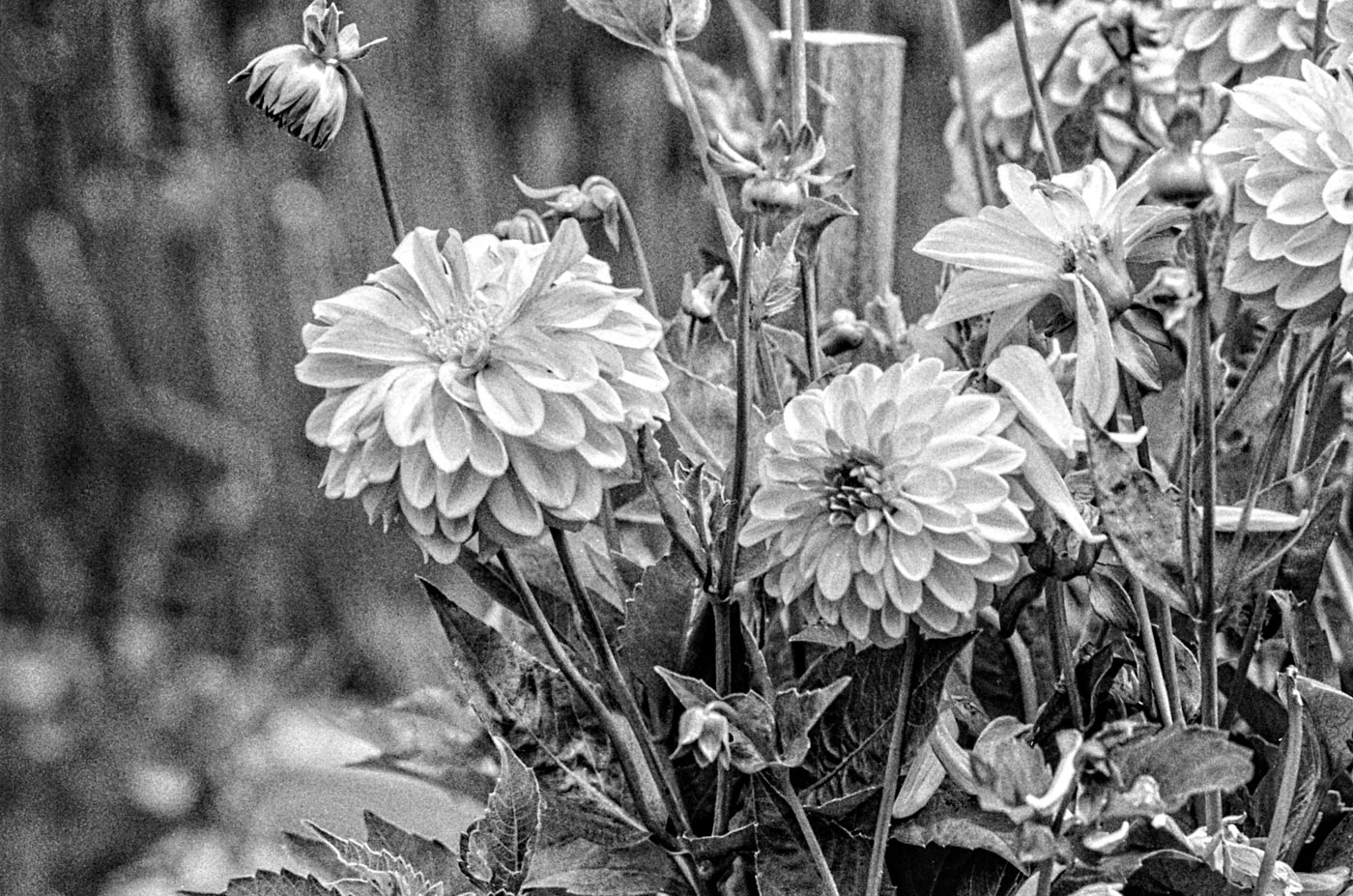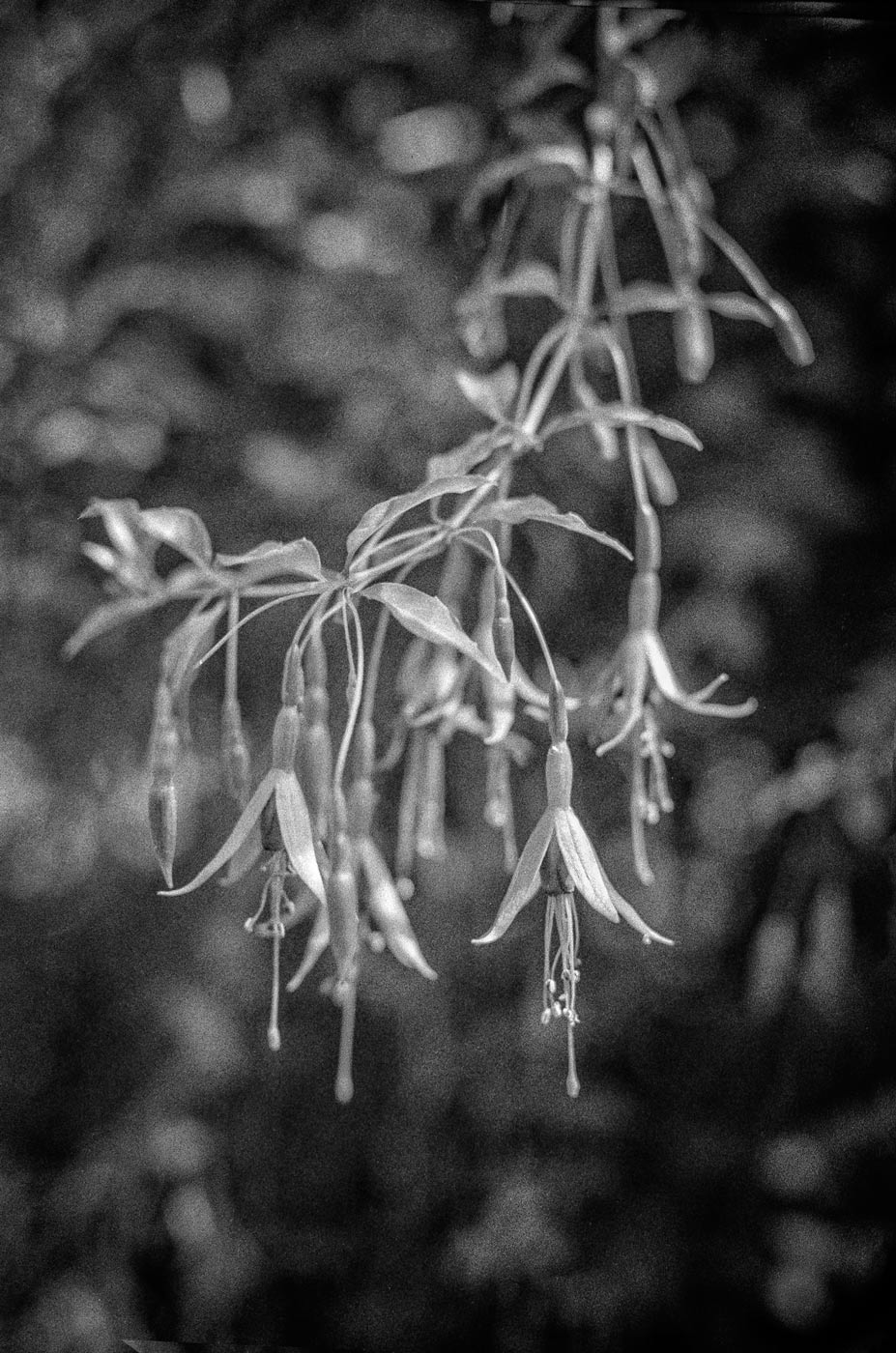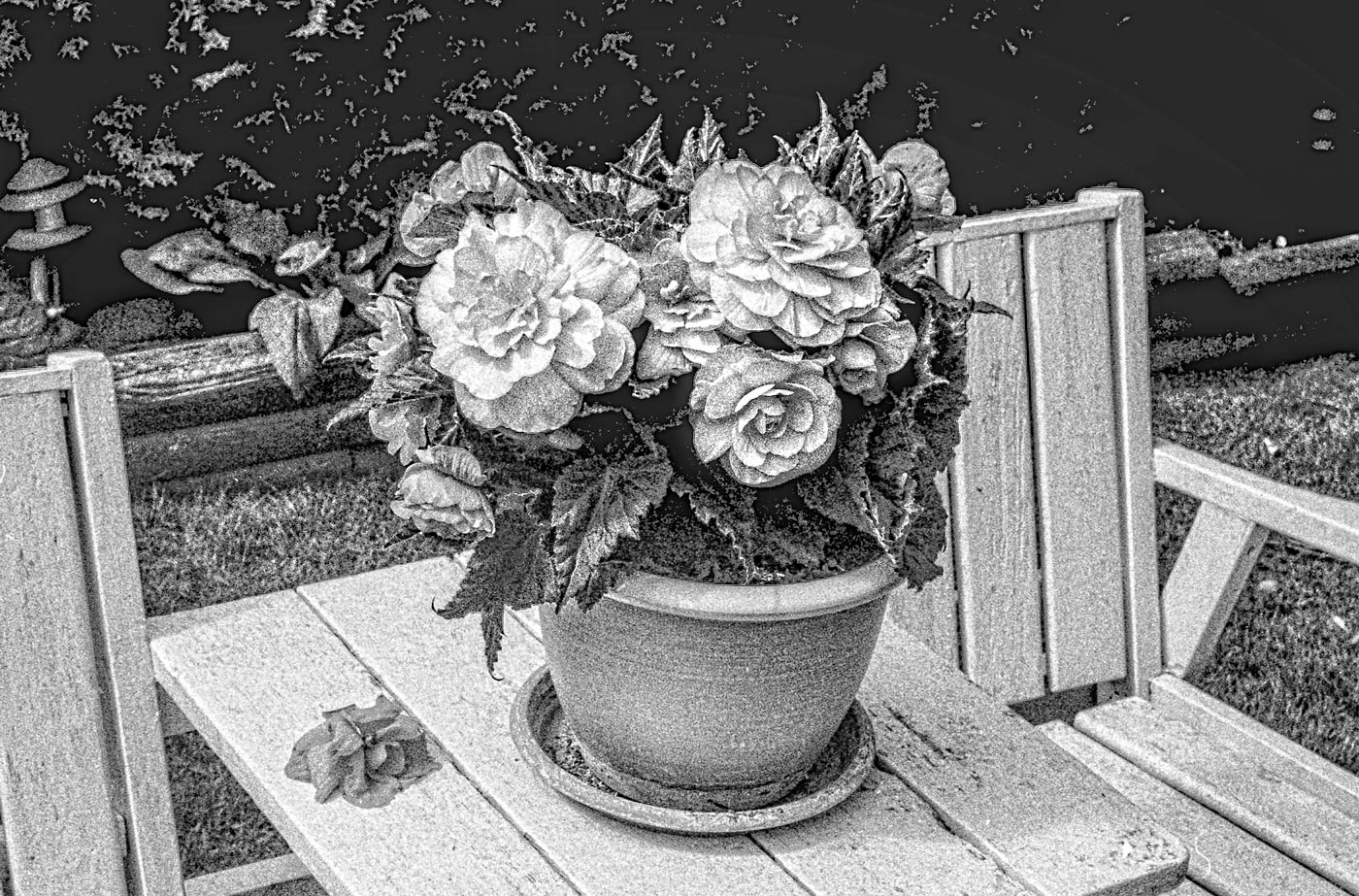The Canon EF is a lovely camera to shoot, although it is more work than a modern Digital SLR. All of the pictures on this post were taken with this camera pictured.
It began as a desire to try out some of my old cameras and to revisit a world I left back in the 1960’s, 70’s and 80’s. In 1960 I was shooting with a Minolta A-2 (which you have never heard of), a Yashika “D” and a Yashika “44” (also which you have never heard of) and in 1961 I acquired a Leica M-3. I rounded out my photo gear in 1962 with a Minolta SR-1 which I dearly loved.
And that was pretty much what I used to take pictures until digital arrived. Up until 1980 or so I shot almost all black and white and developed my own film. Slowly I switched over to color and had my processing done through a camera shop. By then I was shooting mainly the SR-1 for which I had acquired a couple of lenses.
Finally in 2006 I took the plunge into digital with a Rebel XTi and never looked back. And I stopped taking pictures on film.
Digital was like a drug! Instant pictures; automatic focus and exposure; vivid colors; no cost for film; one thousand images on a chip! The head swam with the luxury. I embraced it fully.
One would think that was the end of it. Digital sensors are sharper than film, more sensitive than film, have a greater dynamic range than film (at least in the more expensive professional cameras), and they don’t have to be developed in messy chemical solutions. Film is dead, right? Well, I am thinking, not so much.
These Black Eyed Susans are actually yellow with black centres but without color you are immediately aware of the forma and texture of the blossoms.
I began last November to collect Canon cameras and lenses. I have acquired a nice little assemblage of cameras back to the 1950’s and many lenses to go with them. Most of them appear to be functional. And looking at them I developed an urge to try them. No, I am not going back to film: I just thought it would be nice to experience these old machines first hand and revisit the old days.
I bought some film (yes it is still available) and ran a few rolls through an AE2, an F-1n, an AE-1 and others. The adventure continues through one camera after another. You can follow alonmg with the technical details in my Camera Notes. My first two rolls I had processed through Kerrisdale Cameras, my local camera shop. I received the negatives uncut, cut them into 6 exposure lengths, and I scanned them and from that point on the process became digital.
After two rolls I decided that the processing was too expensive and that I wanted more control, so I began to process my own film. For that I didn’t need a darkroom. The chemicals and equipment are minor and all fit in a small box. For that you don’t need a darkroom.
You can tell an Italian by the garden they keep. It is true! I spend hours in Susan’s garden some days just enjoying, other days taking pictures. And in every season there are pictures to be found.
Well, surprise, I like shooting film. I am not going to give up digital. Far from it. But I am going to shoot more film and will probably continue to do so for as long as film is available. But why?
One reason is that I love using the old cameras. There is this intangible satisfaction that comes with using very old, very fine, machinery. Be it cars, airplanes, guns, watches, old machinery brings a joy of its own. Most men will know exactly what I am talking about and most women will think I am totally nuts. I know that my wife thinks just so!
I thought it would be easy slipping back into a pastime I once knew so well. Well, no, it has not been. I have forgotten skills and judgement that I thought would never leave me. I am awkward with a camera that has to be wound for every shot. I cannot gauge light levels accurately. Film will just not obey me as I attempt to thread it into the camera. I had even forgotten the “f16 rule” for heaven’s sake. There has been an unexpected learning curve.
Look at the pictures here. When I want subjects to shoot I go out into my wife’s very substantial garden. But think about it: when you look at flowers and take away the color, what do you have? That is like looking at dancing and taking away the music! You have shapes, textures and grey. Make a beautiful image out of those, if you can.
Without color we have to fall back on a smaller tool kit and it stretches our creative senses. We are thrown back on basic old principals that we often forget with automatic cameras.
Without color you have to work harder to capture the eye, entertain it, and keep its attention. This is not always easy and many subjects do not lend themselves to this. That makes them a special challenge.
We are spoiled by digital cameras and the Photoshop “vibrance” slider. What passes for photography these days is often just color. We, or more correctly, I, because I cannot speak for you, have forgotten the basics of shape and texture and shades.
It sounds simplistic but it really hit me during my first several rolls, that to shoot film you have to get back to the basics of photography; of all art, really: shape, texture and shades.
As I have gone through my negatives and selected images to work with I realize that this is a good exercise. I need to bear down and learn all over again how to take good photographs without color. I need to learn how to see without color. Because then one develops the building blocks of good photography. These same building blocks underlie digital photography as well. That is why this is a valuable exercise even for those firmly entrenched in the digital age.
Being able to turn the film images into digital ones half way through the workflow is a blessing. You get the film experience and challenge but you have all of the tools of of the digital age to bring out the best of your film images. It is possible to have your cake and eat it too!
I find myself now looking at potential images and deciding if I will use digital or film. I am looking at the images from film and thinking of all the ways I can manipulate them digitally. Film gives you effects that we buy expensive software to emulate. It is easier just to use film. I feel like I have been given another valuable tool for my photographic kit. And, bonus, I get to use my old cameras!
All of the images in this post were taken on the same roll of 36 exposures in a Canon EF single lens reflex (the one pictured above). I developed the film myself and it was scanned on a Canon 9000 Mk II flatbed scanner at 2400 dpi.
I have been writing about my film experiences with my old cameras in my other blog, my Camera Notes, which you can get to through the link in the sidebar on this page if you are interested. The more technical comments about cameras and lenses will be found there.
I will return to this subject later. I am still thinking about this whole film thing and I am sure I will have more to say. I always do!
This is a quintessential black and white image. It is grainy, gritty, and yet possesses presence. You look at it and it is hard to look away. You examine it ever closer, seeking more and more detail. The viewer is drawn in by what are essential B&W basic elements. The subject is simple but the impact is layered and complex.


